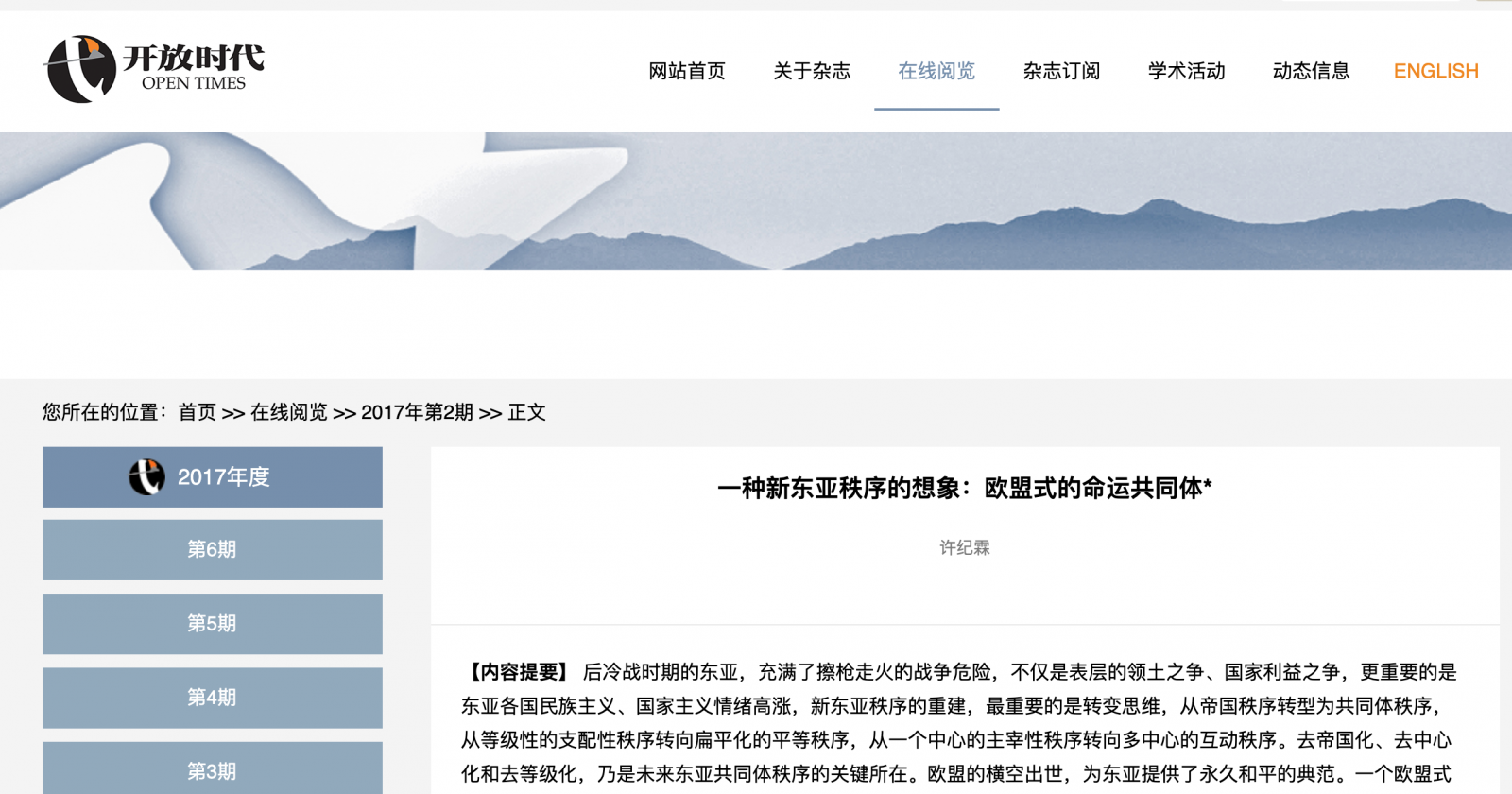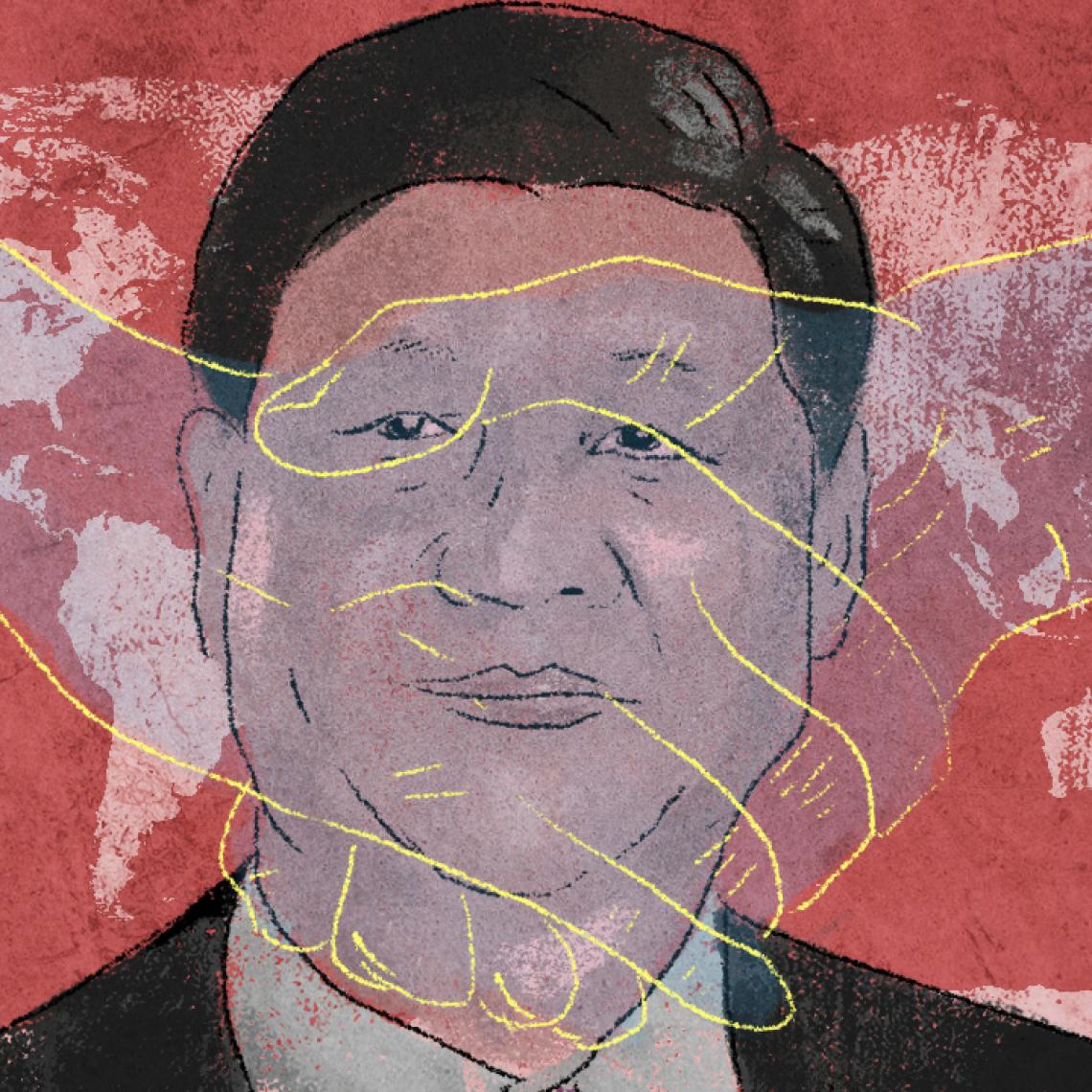
Original illustration by Alice Tse.
The Future of Common Destiny
The Chinese phrase “community of common destiny” may superficially echo ideas at the heart of European transnationalism — but at its core it advocates a return to the primacy of national rights over the rights of the individual.
In November last year, Red Flag (红旗文稿), an influential Chinese Communist Party journal, declared that Xi Jinping had revolutionized foreign relations theory through his concept of “building a community of common destiny for mankind.” Paired with the leader’s signature foreign policy program, the Belt and Road Initiative (BRI), this concept, the journal claimed, is “the banner under which China is leading the current of the times and driving human civilization in the direction of progress.”
To outsiders in Europe and beyond, such language might come across as bravado or empty posturing. But this catchphrase, which was added to China’s Constitution last year and is backed up by the global development strategy of the BRI across more than 150 countries, has at least to be understood seriously as the mark of a more ambitious foreign policy on China’s part — with a clear and stated aim to bring “transformation of the global governance system” (全球治理变革).
What does China mean when it talks about “common destiny”? Where does this phrase come from? How has it been received in Europe?
For our first “Echowall Dialogue,” we invited several perspectives on these questions from both Chinese and European experts. The contributions in this series are not intended as comprehensive or authoritative reads on the concept of a “community of common destiny for mankind,” or renlei mingyun gongtongti (人类命运共同体) — what China has since 2015 preferred in English translations to call “the community of common future for mankind” — but rather as preliminary investigations encouraging further discussion and research. For perspectives on how the concept of a “community of common destiny” has (or has not) been translated and received in their own countries, we turned to Sebastian Veg and Mathieu Duchatel (France), Jerker Hellström (Sweden) and Gianluigi Negro (Italy). For a deep dive into the emergence of Xi’s phrase as an ideological concept within China’s mainstream official discourse, we turned to media scholar Qian Gang (钱钢). For a more unorthodox perspective on how China’s domestic political and economic values might already be shaping destinies in Europe, we turned to historian Qin Hui (秦晖).
We begin the conversation here by looking at echoes, and crucial differences, between China’s signature foreign policy catchphrase and similar language that has been used to describe European integration since shortly after the Second World War. A strong case can be made, in fact, that in framing its concept of a “community of common destiny for mankind,”the Chinese Communist Party drew inspiration from the European discourse of “common destiny” as a means of transnational integration and the building of an economic community of peace and prosperity. But the differences in the Chinese case are fundamental, premised on the supremacy of national sovereignty. This also makes the timing of the Chinese phrase, at a moment of uncertainty in the European project, particularly significant.
Understanding the crucial differences between the Chinese and European conceptions of a “common destiny” may help us gain a clearer understanding of what exactly China means by this phrase its theoreticians insist has revolutionized international relations.
Origin Stories
Questions of origin can be nettlesome and controversial. According to one fairly accepted theory of lineage, the Chinese phrase “community of destiny,” or mingyun gongtongti (命运共同体), goes back to Taiwanese independence leader Peng Ming-min (彭明敏), who mentioned it in his 1972 book A Taste of Freedom (having been influenced by the nineteenth century French historian Ernest Renan and his theory of the nation). Christopher Hughes, credited with establishing the connection to Renan via Peng, has noted that the phrase was used prominently by President Lee Teng-hui of Taiwan in the 1990s. However, Qian Gang’s discovery of the phrase appearing as early as 1965 in the People’s Daily, and even earlier in perhaps related permutations in works from Joseph Stalin translated into Chinese in the early 1950s, would seem to contradict the Taiwan origin theory of “community of destiny,” tantalizing though it may be.
Understanding the crucial differences between the Chinese and European conceptions of a “common destiny” may help us gain a clearer understanding of what exactly China means by this phrase its theoreticians insist has revolutionized international relations.
Outside the Chinese language, it is quite clear that the ideas of Ernest Renan were instrumental in the formation of notions about “common destiny,” a connection Sebastian Veg and Mathieu Duchatel touch on as they discuss the French “communauté de destin.”
Renan’s concept of the nation as a collective identity constituted through the free will and agency of individuals — “A nation is a soul, a spiritual principle,” he said — is crucial to understanding views of nationalism, nationhood and community as they emerged in the 20th century. Renan’s ideas, conveyed in “What is a Nation?,” his 1882 address, were an important part of the intellectual and political discourse in Europe from the late 19th century onwards. And here we must mention also the Austrian politician and thinker Otto Bauer, who in this 1907 book The Question of Nationalities and Social Democracy, which touches on Renan’s ideas, argued that nations should be conceived as “communities of character” arising from “communities of fate” (Shicksalsgemeinschaften). For Bauer, as for Renan, national identities were shaped, not given truths, and they were defined by more than just common language or common geographic origin.
By the 1940s, we can find the ideas of both Renan and Bauer shaping notions of national identity in Asia. As Leo Suriyadinata details in his book on ethnic Chinese populations in Southeast Asia, Sukarno, the leader of Indonesia’s movement of independence from Dutch colonial rule and its first president, mentioned both thinkers side-by-side in his June 1945 speech “The Birth of Pancasila,” which outlined the country’s foundational philosophy.
The ideas of Renan and Bauer were important — though of course not the only — contributions to ideas, including around the phrase “community of destiny,” that drove the formation of the European Union and its antecedents from the 1950s onward. In his forward for the English translation of Bauer’s book, published in 2000, Heinz Fischer, then president of Austria, quoted one passage in which he said Bauer had envisioned a united Europe:
Just as the development of capitalist commodity production linked the manorial estates and the towns isolated during the Middle Ages to form the modern state, so too will the international division of labor create in socialist society a new type of social structure above the national polity, a state of states, into which the individual national polities will integrate themselves. The United States of Europe will thus be no longer a dream, but the inevitable ultimate goal of a movement that the nations have long begun and that will be enormously accelerated by forces that are already becoming apparent.
The preamble to the 1951 Treaty of Paris, the document that formally established the European Coal and Steel Community and began the process of integration leading eventually to the European Union, speaks of the formation of a “broad and independent community” among the people of six European nations in order to “lay the bases of institutions capable of giving direction to their future common destiny.”
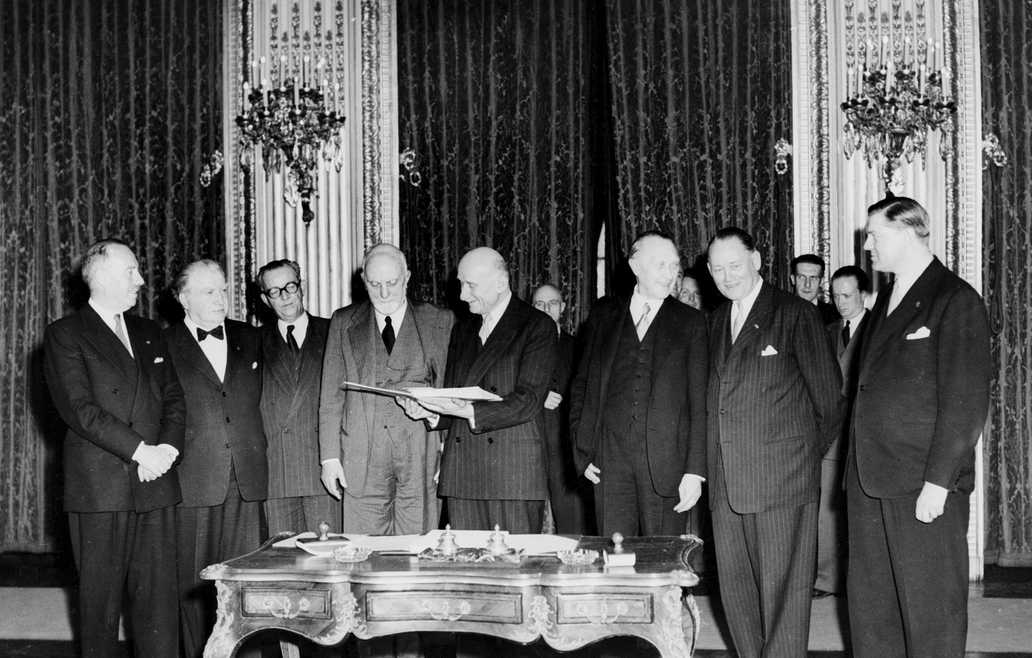
The signing of the Treaty of Paris in 1951, creating the the European Coal and Steel Community. Source: Wikimedia Commons.
The term “common destiny” occurs quite frequently in early references to the formation of the European community around mid-century, and readers may in particular enjoy this black-and-white publicity film created in 1958 to explain the mechanics of the European Coal and Steel Community. The film’s title is “Common Destiny.”
Understanding the crucial differences between the Chinese and European conceptions of a “common destiny” may help us gain a clearer understanding of what exactly China means by this phrase its theoreticians insist has revolutionized international relations.
At the heart of this idea of “common destiny” lies the conviction that the populations of Europe must form a broader community of interest transcending the bounds of the nation-state — the conflicts of the 20th century having brutally demonstrated the truth of Renan’s opening line about the nation being an idea that “lends itself to the most dangerous misunderstandings.” It is no surprise, then, that we again find the notion of “common destiny” emerging more than four decades later in the Treaty Establishing a Constitution for Europe (TCE), signed in Rome in 2004, but in the end not ratified by all EU members:
CONVINCED that, while remaining proud of their own national identities and history, the peoples of Europe are determined to transcend their former divisions and, united ever more closely, to forge a common destiny,
CONVINCED that, thus ‘United in diversity’, Europe offers them the best chance of pursuing, with due regard for the rights of each individual and in awareness of their responsibilities towards future generations and the Earth, the great venture which makes of it a special area of human hope . . .
The emphasis on the individual in the above passage is clear, and for some the project of European integration meant the nation-state had become outmoded. German political scientist Erich Röper wrote in 2007, the year EU member states signed the Treaty of Lisbon, that the nation-state was “on its way out: obsolete.” Europe, through its process of integration, pointed the way to “something entirely new,” he said. “Europe’s population focuses on social solidarity as the foundation for an evolving common destiny, which will be the driving force behind an unprecedented nation-building process, whose dynamics set it apart from the concept of the nation-state of the past two centuries.” Röper employs both “common destiny” and “community of destiny,” terms still used with regularity to talk about Europe.
More than a decade on, the same terms persist in discussions of the immense challenges facing Europe, which include the rise of far-right nationalist parties and hostility to the European ideal, the latter seen most vividly in the phenomenon of Brexit. These trends pose a major challenge to the European multilateral order, and the European dream of “a new kind of peace.” As Emiliano Alessandri of the German Marshall Fund noted recently: “[All] these questions not only challenge the EU-centric approach which had been at the roots of the EU external action over the past decades, but may also weaken the notion of a common European destiny.”
Given the challenges facing the idea of Europe as a transnational community, the question of its future naturally became a key agenda in the latest European elections, recalling Renan’s remarks about the nation (or in this case the transnational community) as a “daily referendum” by human populations. An article published online in Mai 2019 by Manfred Weber, a candidate for the European People’s Party, bore the headline: “Our common destiny is at stake in these next European elections.”
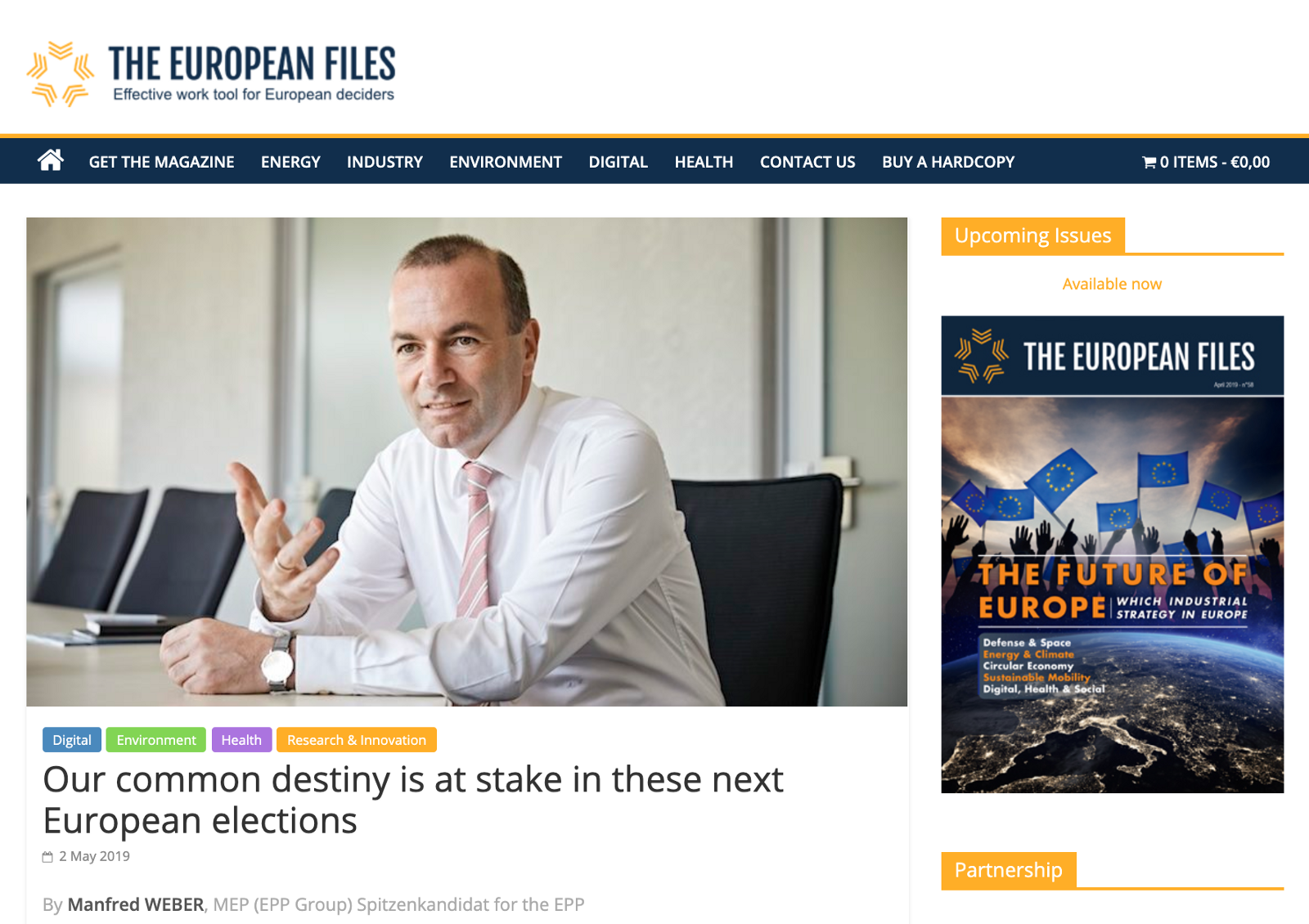
At the heart of these debates over “common destiny” is the question of identity — that word used so often across the West, and beyond, these days as people search about for the root causes of division and discord. That word at the heart of the rise of the far-right across Europe; at the heart of Brexit; at the heart of Italian politics. Tough questions about nationalism and identity politics.
Europe under the concept of transnational “common destiny” has been an experiment, what scholar Franco Zappettini has called “a political arena where embryonic post-national identities and new forms of belonging are being negotiated, challenged and legitimized.”
In Europe today, we are watching Renan’s “daily referendum” unfold.
The emergence at just this moment of identity crisis for the West of what is being sold as a revolutionary and distinctly Chinese “common destiny” is an intriguing turn of events, to say the least. What does China’s “common destiny” promise in the way of identities?
Nationalism and the Individual
The ideas about nationalism we find in both Renan and Bauer, and the vision of a European transnational identity they helped to inspire, contrast markedly with the convictions about nationhood and identity held by the Chinese Communist Party — and this contrast can help us gain a clearer view of what exactly China means when it talks about building a “community of common destiny for mankind.”
While Renan rejects the idea of nationhood arising from shared race, language, religion or geography, suggesting instead that it emerges from the individual’s search for “collective identity,” the Communist Party defines nationhood around the idea of a “great rejuvenation” of an abstracted “Chinese nation,” a grand narrative in which the Party maintains a central and inviolable role. In Renan’s imagination, by contrast, the nation is a fluid concept, defined and redefined by communities of people, a “daily referendum.”
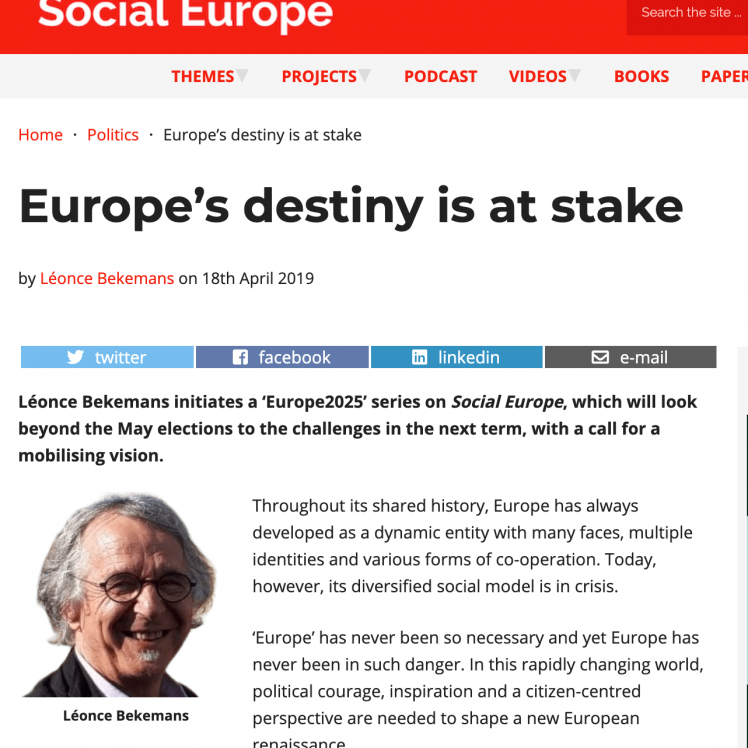
In an article published in April 2019 at “Social Europe,” Léonce Bekemans writes of Europe in terms of a “community of destiny,” a “community of values” and a “community of citizens.”
Bauer, as noted in the quote from his book above, wrote in 1907 of the future Europe as a “state of states.” But he too stressed the self-determination of the individual. As Swiss historian Jörg Fisch has noted, both Bauer and Karl Renner, another key proponent of Austro-Marxism, “saw self-determination as an individual right to retain one’s own cultural identity.”
On this question, Bauer provides us with what could be a crucial link on the question of origins to the contemporary Chinese concept of a “community of common destiny for mankind” as defined by Xi Jinping and his theoreticians. Qian Gang notes in his media study of the Chinese phrase that the earliest appearance he can find of the partial phrase “community of destiny” (命运共同体) in the People’s Republic of China appears in the 1953 translation of Stalin’s Marxism and the National Question (马克思主义与民族问题). In that book, Otto Bauer is the focus of Stalin’s indignation for his suggestion that “a nation is a community of fate arising from a community of character” (Eine Nation ist eine aus Schicksalgemeinschaft erwachsene Charaktergemeinschaft).
As Jörg Fisch characterizes the fundamental rift between Bauer and Stalin on this question, we see a familiar dichotomy emerge:
The Bolsheviks in Russia held the opposing position. They gave the right of self-determination the meaning that was fitting to make it a watchword: It was not, at least primarily, a question of individual rights, but rather of the highest rights of peoples, of sovereignty and political independence. The key aspect was the equal rights of the state created on the basis of the right of self-determination with other states.
This leads to the tantalizing question of whether and to what extent Xi Jinping’s “community of common destiny for mankind” is a re-packaging of Bauer’s notion of a “community of destiny” in the statist gift box of Stalin-era foreign policy. We should recall that the principle of non-intervention in China’s foreign policy dates back to 1950 and the signing of the Sino-Soviet Treaty of Friendship, and that it became a core part of China’s diplomatic principles four years later with the so-called “Five Principles of Peaceful Coexistence” outlined by Premier Zhou Enlai (周恩来) — 1) mutual respect for sovereignty and territorial integrity, 2) mutual non-interference in internal affairs, 3) mutual non-aggression, 4) equality and cooperation and 5) peaceful coexistence.
For the Chinese Communist Party today, ideas of national sovereignty, territorial integrity and non-interference that subordinate the rights of the individual to those of the state are as central and inviolable as they were then, and they form the core of Xi Jinping’s notion of a “community of common destiny for mankind.” As China analyst Liza Tobin noted recently in an analysis of the key points of Xi’s policy phrase: “The aspirations it expresses echo and expand upon themes voiced by Chinese leaders since the early days of the People’s Republic.”
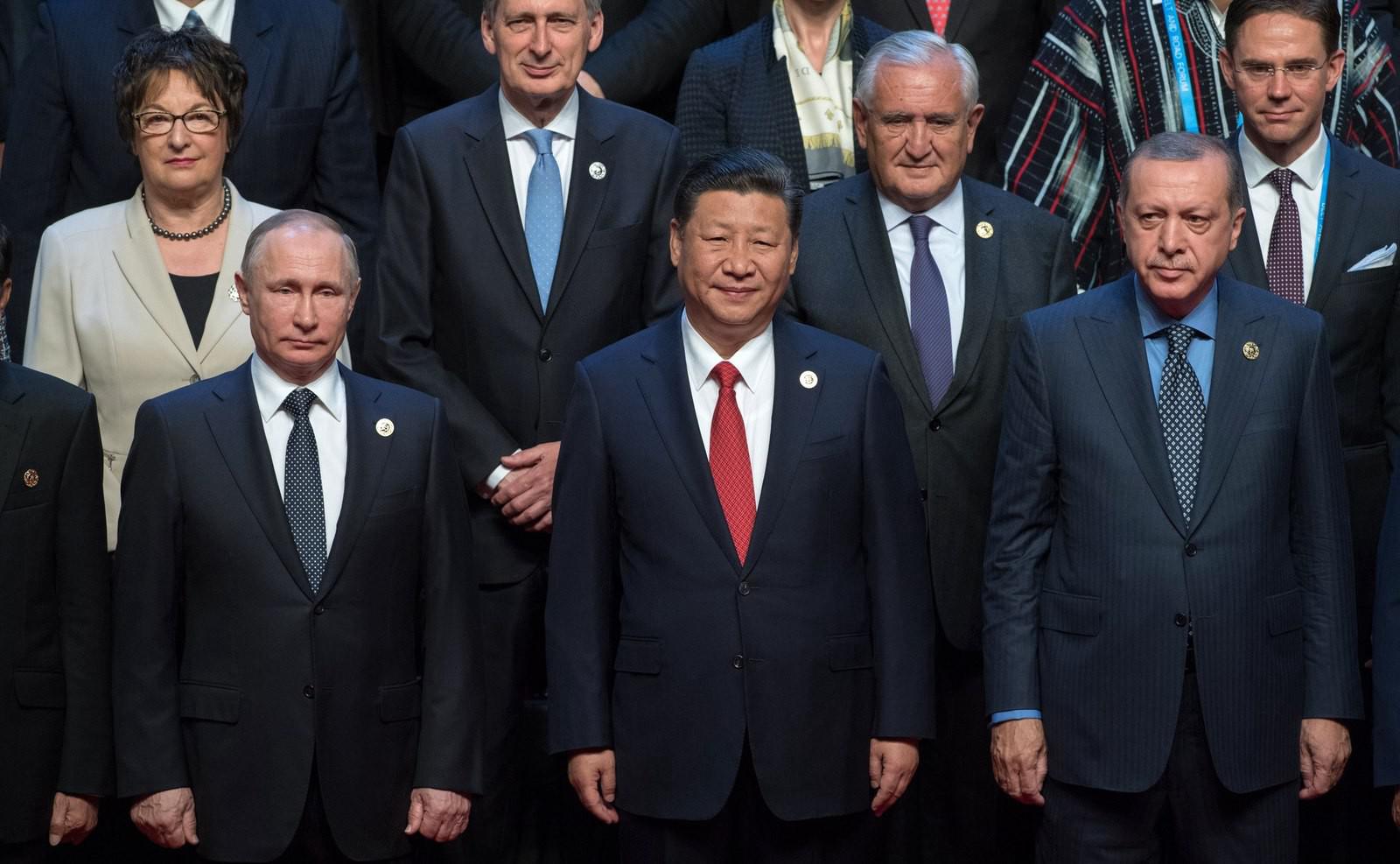
Chinese President Xi Jinping is pictured in 2017 at the first Belt and Road Forum, posing with other leaders. Photo from the Russian Presidential Press and Information Office, available at Wikimedia Commons.

